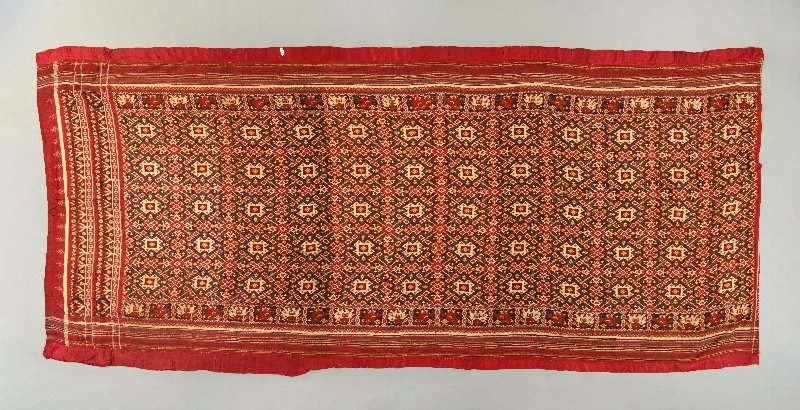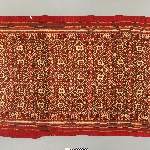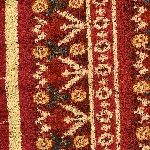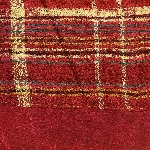| Native Name | Patola |
| Object Number | 51-17-3 |
| Current Location | Collections Storage |
| Culture | Indian |
| Provenience | India | Gujarat |
| Section | Asian |
| Materials | Silk |
| Technique | Double Ikat | Dyed | Woven |
| Description | Patola silk sari from Gujarat with red, green, white, and yellow silk. Patola, the plural form of patolu, is a famous double-ikat sari from Gujarat. Ikat is a resist-dyeing technique that involves tie-dyeing warps or wefts before weaving. A more complex variation, double-ikat demands pre-dyeing both warps and wefts to create the pattern. Floral designs interspersed with geometric elements on this piece of textile, which is a favored pattern of the Muslim communities in Gujarat. The weaving process can be especially labor intensive and time consuming because the weavers have to match up the dyed warp and weft in a perfect order. It takes two skilled weavers nearly a month to weave one single piece of patola sari, which makes it a highly-valued garment for people of higher socioeconomic strata. Gujarati women from noble families wear silk patola sari on special occasions like weddings and other social gatherings. The type of finely woven textile was also exported to Indonesia in sixteenth century as a luxury good. The tradition is dying out due to the high cost and the specific skills required to create patola. There are now only two Jain families who are still weaving patola in Patan, the historical center of patola production. |
| Length | 378 cm |
| Width | 145 cm |
| Credit Line | Gift of Anna K. Stimson, 1951 |
Report problems and issues to digitalmedia@pennmuseum.org.






